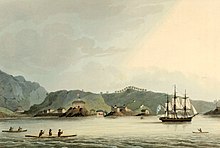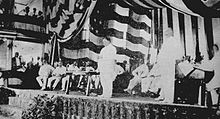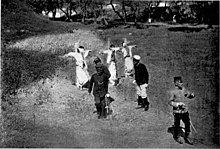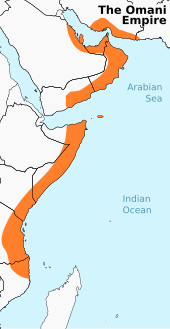British

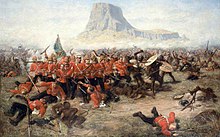
|
Main article: British Empire |
- French and British interregnum in the Dutch East Indies
- British Manila
- Aden
- British Sumatra (Bencoolen 1668-1824)
- Afghanistan (de jure)
- British America
- Anglo-Egyptian Sudan
- Ascension Island
- Ashanti
- Australia
- Bahamas
- Barbados
- Basutoland
- Bechuanaland
- British Borneo
- British East Africa
- British Guiana
- British Honduras
- British Hong Kong
- British Leeward Islands
- Anguilla
- Antigua
- Barbuda
- British Virgin Islands
- Dominica
- Montserrat
- Nevis
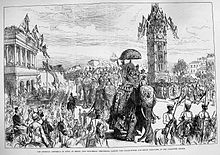
The Delhi Durbar of 1877: the proclamation of Queen Victoria as Empress of India - Saint Christopher-Nevis-Anguilla
- Saint Kitts
- British Malaya

The First Anglo-Sikh War, 1845–46 - British Somaliland
- British Western Pacific Territories
- British Windward Islands
- Burma
- Canada
- Cameroon
- Ceylon
- Christmas Island
- Cocos (Keeling) Islands
- Cyprus

The result of the Boer Wars was the annexation of the Boer Republics to the British Empire in 1902 - Egypt
- Falkland Islands
- Falkland Islands Dependencies
- The Gambia
- Gibraltar
- Gold Coast
- British Raj

A view of shops with anti-British and pro-Independence signs, Malta, c. 1960 - Heard Island and McDonald Islands
- Ionian Islands
- Ireland
- Jiujiang
- Kenya
- Sheikhdom of Kuwait
- Lagos
- Maldives
- Malta
- Mandatory Palestine
- Emirate of Transjordan
- Mandatory Iraq
- Mauritius
- Muscat and Oman
- New Zealand
- Norfolk Island
- Nigeria
- Northern Nigeria
- Northern Rhodesia
- Nyasaland (formerly the British Central Africa Protectorate)

Gibraltar National Day in British-controlled Gibraltar - Papua
- Penang
- Rarotonga
- Seychelles
- Sierra Leone
- Shanghai International Settlement
- Singapore
- South Africa
- Federation of South Arabia
- Protectorate of South Arabia
- Southern Rhodesia
- St Helena
- Swaziland
- Tanganyika
- Tianjin
- British Togoland
- Trinidad and Tobago
- Tristan da Cunha
- Trucial States
- Uganda
- Tonga
- Weihai
- Zanzibar












